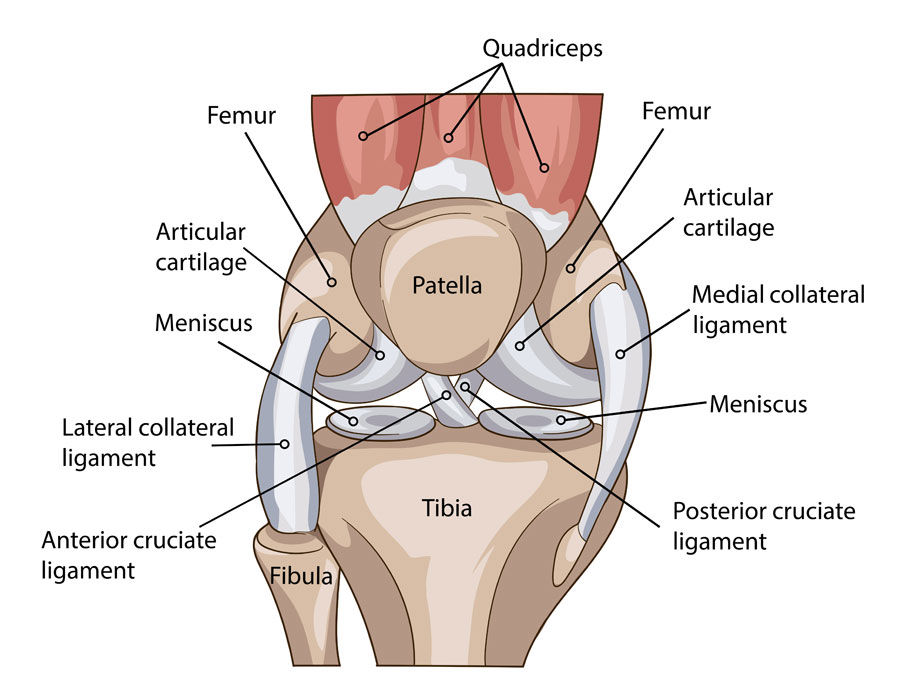There has been a significant rise in knee injuries over the past 20 years with ACL injuries in males and females becoming more prevalent, as well as knee dislocations in females. The knee is a joint that is relatively unstable and is encompassed by a large amount of tendons and ligaments to provide support. The lack of joint stability places large amounts of strain on the surrounding tissue. Making ligament, tendon and muscle injuries very common. Did you know osteopaths can treat knee injuries?

Common conditions of the knee osteopaths can treat:
- ACL/PCL pre or post operatively
- Meniscus injuries
- Dislocations
- Runners knee
- Osteoarthritis
- Rheumatoid Arthritis
- Bursitis
- Tendinopathy
- Ligament sprain
- Osgood-schlatters
The knee joint is a relatively unstable joint. It is a hinge style joint which means it relies on the strength of the muscle, tendons and ligaments around it to provide the extra support. The knee can also be highly influenced by the hip, foot and ankle joints. When treating the knee, your osteopath will consider the joints around it as a contributing factor for the pain. For example, the gluteus medius is a muscle on the side of our hip that helps reduce the pressure transferred down into the knee. If this muscle is not doing it job correctly, the knee will be taking on extra strain. This can also be applied to the plantar fascia in the foot. The plantar fascia acts as a spring for our arches. If this structure isn’t able to absorb pressure from the ground, it can be transferred into the knee. So while the pain and discomfort is felt in the knee, the primary cause could be coming from the hip or foot/ankle. Treatment therefore includes the hip, knee, foot and ankle to get the best results.
Knee pain can have a huge impact on your day. From struggling to take the stairs, getting our of your chair, to walking for long periods of time. Call us today to ask if we can help you with your knee pain on 0422 630 369.

